A) Reduction reaction
B) Oxidation reaction
C) Elimination reaction
D) Substitution reaction
F) C) and D)
Correct Answer

verified
Correct Answer
verified
Multiple Choice
What is the correct classification of the following reaction? 
A) Reduction reaction
B) Oxidation reaction
C) Elimination reaction
D) Substitution reaction
F) A) and C)
Correct Answer

verified
Correct Answer
verified
Multiple Choice
Which of the following is (are) formed by ozonolysis of compound A? 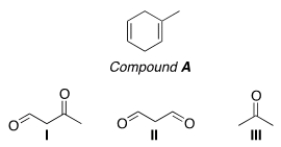
A) Only I
B) Only II
C) Only I and II
D) I, II, III
F) A) and C)
Correct Answer

verified
Correct Answer
verified
Multiple Choice
What is the correct classification of the following reaction? 
A) Reduction reaction
B) Oxidation reaction
C) Elimination reaction
D) Substitution reaction
F) A) and B)
Correct Answer

verified
Correct Answer
verified
Multiple Choice
Predict the major product of the following reaction. 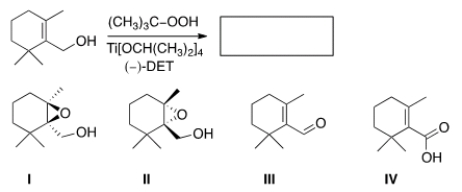
A) I
B) II
C) III
D) IV
F) None of the above
Correct Answer

verified
Correct Answer
verified
Multiple Choice
Rank the following alkenes in order of decreasing heat of hydrogenation. 
A) I > II > III
B) III > I > II
C) II > I > III
D) III > II > I
F) A) and B)
Correct Answer

verified
Correct Answer
verified
Multiple Choice
What is the correct classification of the following reaction? 
A) Reduction reaction
B) Oxidation reaction
C) Elimination reaction
D) Substitution reaction
F) A) and B)
Correct Answer

verified
Correct Answer
verified
Multiple Choice
What is the correct classification of the following reaction? 
A) Reduction reaction
B) Oxidation reaction
C) Elimination reaction
D) Substitution reaction
F) All of the above
Correct Answer

verified
Correct Answer
verified
Multiple Choice
Which of the following explains why heats of hydrogenation cannot be used to determine the relative stability of compounds A and B below? 
A) Compound A is trisubstituted while compound B is monosubstituted.
B) Compound A has E configuration while compound B has no E/Z configuration.
C) Both compounds A and B have no E/Z configurations.
D) Hydrogenation of A and B give different alkanes.
F) A) and D)
Correct Answer

verified
Correct Answer
verified
Multiple Choice
Which of the following classes of organic compounds cannot undergo reduction easily?
A) Alkanes
B) Alkenes
C) Alkynes
D) Carboxylic acids
F) B) and D)
Correct Answer

verified
Correct Answer
verified
Multiple Choice
Determine the product of the following reaction. 
A) I
B) II
C) III
D) IV
F) All of the above
Correct Answer

verified
Correct Answer
verified
Multiple Choice
Determine the product of the following reaction, ignoring stereochemistry. 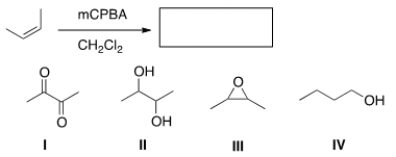
A) I
B) II
C) III
D) IV
F) B) and C)
Correct Answer

verified
Correct Answer
verified
Multiple Choice
What is the product of the following reaction? 
A) I
B) II
C) III
D) IV
F) B) and D)
Correct Answer

verified
Correct Answer
verified
Multiple Choice
A compound X of molecular formula C8H12 with no triple bonds reacts with one equivalent of H2 to give a new compound having molecular formula C8H14. What can be inferred about the structure of compound X?
A) Compound X has 3 rings.
B) Compound X has 3 bonds.
C) Compound X has 1 ring and 2 bonds.
D) Compound X has 2 rings and 1 bond.
F) B) and C)
Correct Answer

verified
Correct Answer
verified
Multiple Choice
What is the correct classification of the following reaction? 
A) Reduction reaction
B) Oxidation reaction
C) Elimination reaction
D) Substitution reaction
F) None of the above
Correct Answer

verified
Correct Answer
verified
Multiple Choice
Determine the product of the following reaction. 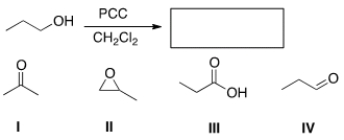
A) I
B) II
C) III
D) IV
F) A) and C)
Correct Answer

verified
Correct Answer
verified
Multiple Choice
Which of the following statements about the reduction of epoxides with LiAlH4 is true?
A) The nucleophile is a hydride (H-) .
B) In unsymmetrical epoxides, nucleophilic attack of H- occurs at the more substituted carbon atom.
C) The reaction follows SN1 mechanism.
D) The nucleophile, H-, is a weak nucleophile.
F) B) and D)
Correct Answer

verified
Correct Answer
verified
Multiple Choice
What is (are) the product(s) of the following reaction? 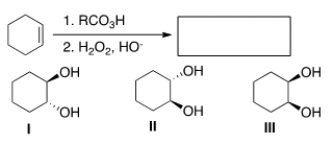
A) Only I
B) Only II
C) Only III
D) Only I and II
F) A) and C)
Correct Answer

verified
Correct Answer
verified
Multiple Choice
Rank the following alkenes in order of increasing rate of hydrogenation. 
A) I < III < IV < II
B) IV < III < II < I
C) I < II < III < IV
D) IV < II < III < I
F) None of the above
Correct Answer

verified
Correct Answer
verified
Multiple Choice
What reagent is required to accomplish the following transformation? 
A) Na, NH3
B) H2, Pd-C
C) H2, Ni
D) H2, Lindlar catalyst
F) A) and D)
Correct Answer

verified
Correct Answer
verified
Showing 21 - 40 of 43
Related Exams